Unlocking a Milwaukee Miter Saw is a crucial skill for any woodworking enthusiast or professional. The ability to unlock the saw opens up a world of possibilities, allowing you to make a wider range of cuts and achieve greater precision in your projects. In this article, we will explore the importance of unlocking a Milwaukee Miter Saw and provide you with a comprehensive guide to mastering this skill.
Understanding how to unlock your Milwaukee Miter Saw is essential for maximizing its functionality. By unlocking the saw, you gain the freedom to adjust the angles and positions of the blade, enabling you to make bevel cuts, compound cuts, and precise miter cuts. Whether you’re working on trim, molding, or any other woodworking project, unlocking the miter saw expands your capabilities and allows you to achieve the desired results.
In this article, we will cover everything you need to know about unlocking a Milwaukee Miter Saw. We’ll begin by explaining the basics of a miter saw and its key components. Then, we’ll delve into the reasons why unlocking the saw is necessary for various tasks and the benefits it brings. Next, we will explore the different models of Milwaukee Miter Saws available, highlighting their features and capabilities.
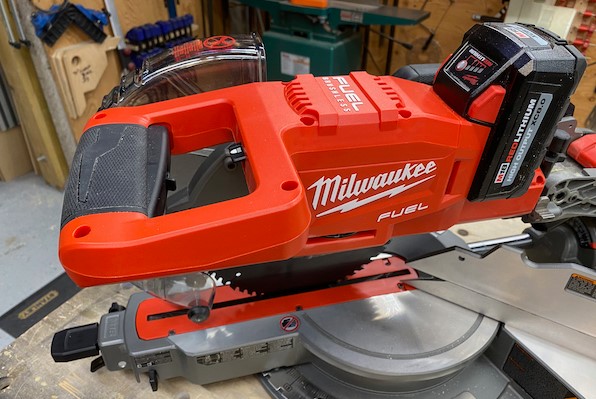
To help you unlock your Milwaukee Miter Saw with confidence, we will provide you with a step-by-step guide. This guide will include detailed instructions, settings, and safety measures to ensure a smooth unlocking process. Additionally, we’ll share valuable tips and troubleshooting techniques to address common issues that may arise during the unlocking process.
Unlocking the Milwaukee Miter Saw is only the beginning. We will also discuss best practices for operating the saw, including proper body positioning, maintaining stability, and ensuring safety throughout the cutting process. Furthermore, we’ll explore advanced techniques for maximizing the saw’s capabilities, such as optimizing bevel and miter angles and utilizing additional features and accessories.
Maintaining and caring for your Milwaukee Miter Saw is crucial for its longevity and optimal performance. We will provide insights into regular cleaning, lubrication, calibration checks, and blade maintenance. Additionally, we’ll offer guidance on proper storage to protect your miter saw when not in use.
Throughout the article, we’ll address frequently asked questions and safety considerations related to unlocking and operating a Milwaukee Miter Saw. By addressing these concerns, we aim to provide you with a comprehensive understanding of the unlocking process and equip you with the necessary knowledge to unlock and operate your Milwaukee Miter Saw safely.
In conclusion, unlocking a Milwaukee Miter Saw is a skill that every woodworking enthusiast or professional should acquire. By unlocking the saw, you unlock a world of possibilities and achieve greater precision in your woodworking projects. In the following sections, we will guide you through the process, providing step-by-step instructions, tips, and safety considerations to ensure a successful unlocking experience. Let’s get started on unlocking the full potential of your Milwaukee Miter Saw.
Understanding the Basics of a Milwaukee Miter Saw
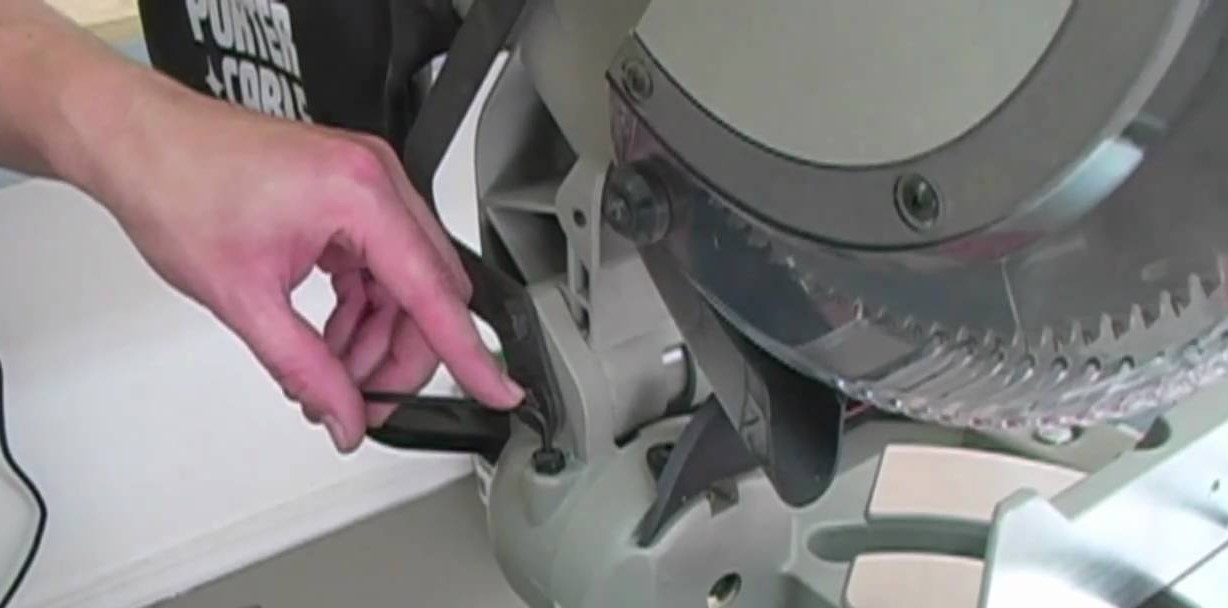
A miter saw is a specialized power tool commonly used in woodworking and carpentry projects. It is designed to make accurate crosscuts and miter cuts at various angles. A Milwaukee Miter Saw is a specific brand known for its durability and precision.
A Milwaukee Miter Saw consists of several key components that contribute to its functionality and versatility. These components include:
- Blade: The blade is the cutting tool of the miter saw. Milwaukee Miter Saws usually come with high-quality, carbide-tipped blades that deliver clean and precise cuts.
- Blade Guard: The blade guard is a safety feature that encloses the blade when it is not in use, protecting the user from accidental contact with the sharp blade.
- Miter Scale: The miter scale is a calibrated guide on the miter saw that allows you to set the desired angle for making miter cuts. Milwaukee Miter Saws typically have a wide range of angle options for increased flexibility.
- Bevel Scale: The bevel scale enables you to adjust the bevel angle of the saw blade. This feature is essential for making bevel cuts, which involve tilting the blade to create angled cuts on the workpiece.
- Fence: The fence is a vertical guide that supports the workpiece and helps maintain stability during cutting. It ensures consistent and accurate cuts by providing a reference surface for the workpiece.
- Sliding Mechanism (on some models): Certain Milwaukee Miter Saws come with a sliding mechanism that allows the saw head to slide back and forth, increasing the cutting capacity and enabling cuts on wider workpieces.
When working with a Milwaukee Miter Saw, it’s important to follow safety precautions to prevent accidents and injuries. Some basic safety guidelines to keep in mind include:
- Always wear appropriate personal protective equipment (PPE), such as safety goggles, ear protection, and a dust mask.
- Ensure the miter saw is placed on a stable and level surface to prevent it from tipping over during operation.
- Keep your hands and fingers away from the blade while the saw is running or when making adjustments.
- Before making any cuts, double-check that the blade guard is properly functioning and in place.
- Avoid wearing loose clothing or jewelry that could get caught in the saw’s moving parts.
By understanding the basic components of a Milwaukee Miter Saw and following safety precautions, you can lay a solid foundation for unlocking and operating the saw effectively and safely.
Why You Might Need to Unlock Your Milwaukee Miter Saw
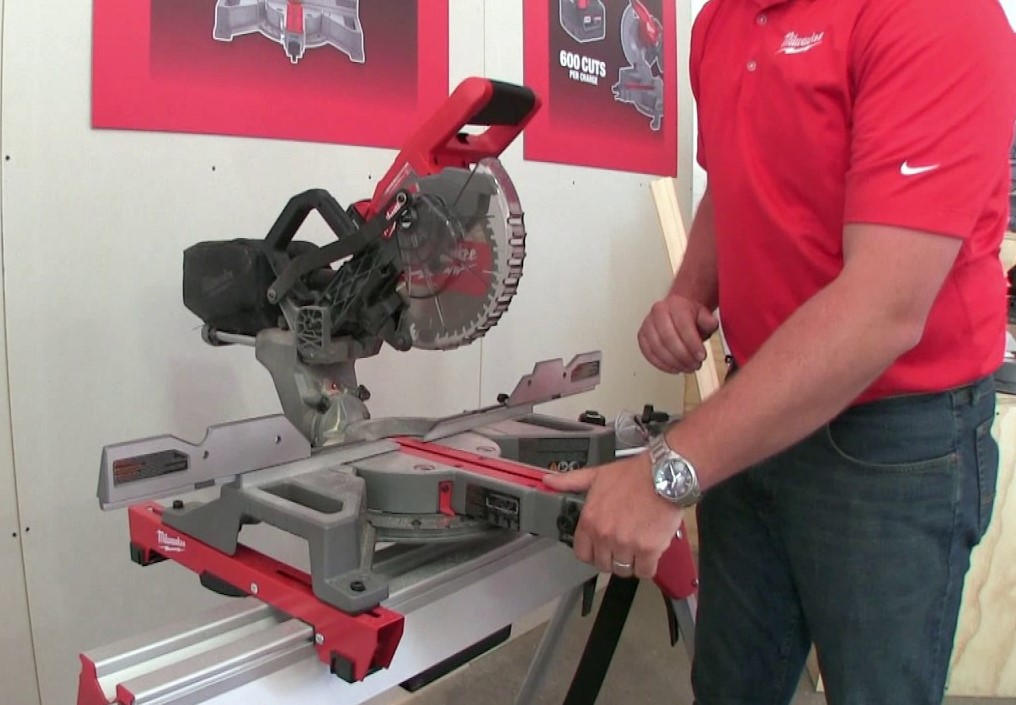
Unlocking your Milwaukee Miter Saw is essential to expand its capabilities and tackle a wider range of woodworking tasks. Let’s explore why unlocking the saw is necessary, provide examples of situations where unlocking is required, and discuss the benefits it brings.
Importance of Unlocking the Saw for Various Tasks:
Unlocking your Milwaukee Miter Saw allows you to make adjustments to the blade angles, enabling you to accomplish specific cuts that would otherwise be impossible. Some key tasks that require unlocking the saw include:
- Bevel Cuts: Bevel cuts involve tilting the blade at an angle to create angled cuts on the workpiece. Unlocking the saw allows you to adjust the bevel angle, making it possible to create bevel cuts for applications such as chamfering, creating angled edges, or fitting pieces together at specific angles.
- Compound Cuts: Compound cuts involve both bevel and miter angles simultaneously. By unlocking the saw, you can adjust both the bevel and miter angles, allowing you to make compound cuts for projects that require complex angles, such as crown molding or picture frames.
- Miter Cuts: Miter cuts are angled cuts made across the width of the workpiece. Unlocking the saw enables you to adjust the miter angle, allowing precise cuts for applications such as joining two pieces at an angle or creating decorative corners.
Examples of Situations Where Unlocking is Necessary:
- If you’re working on a project that requires a beveled edge, such as a beveled tabletop or a sloping surface, unlocking the saw to set the desired bevel angle is crucial.
- When installing crown molding or baseboards, unlocking the saw and adjusting the miter angle allows you to create tight and accurate miter joints.
- For projects that involve cutting complex angles, like compound angles in picture frames or furniture pieces, unlocking the saw is necessary to achieve the desired results.
Benefits of Unlocking the Miter Saw:
Unlocking your Milwaukee Miter Saw offers several benefits that enhance your woodworking experience:
- Versatility: By unlocking the saw, you unlock its full range of capabilities, enabling you to handle a wider variety of woodworking tasks. This versatility allows you to explore creative designs and tackle projects that require precise angles and cuts.
- Precision and Accuracy: Unlocking the miter saw allows you to make fine adjustments to the blade angles, resulting in highly accurate and precise cuts. This level of precision is essential for achieving seamless joints, tight-fitting corners, and professional-quality woodworking projects.
- Time and Effort Savings: With an unlocked Milwaukee Miter Saw, you can make specific cuts more efficiently. This saves time and effort compared to alternative methods or tools that may require additional steps or adjustments.
Unlocking your Milwaukee Miter Saw opens up a world of possibilities and empowers you to take on woodworking projects with confidence. Whether it’s bevel cuts, compound cuts, or precise miter cuts, unlocking the saw allows you to accomplish tasks that would be challenging or impossible otherwise. The versatility, precision, and time-saving benefits make unlocking the miter saw an essential skill for any woodworking enthusiast or professional.
Exploring Different Models of Milwaukee Miter Saws
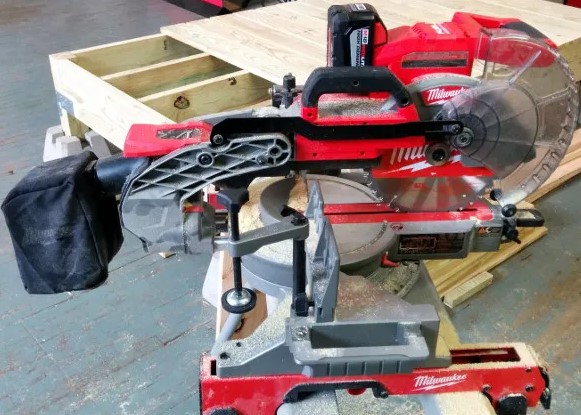
Milwaukee offers a range of miter saw models, each designed to meet different woodworking needs and preferences. In this section, we will provide an overview of the various Milwaukee Miter Saw models available, highlight their similarities and differences, and offer a brief comparison of their features and capabilities.
Milwaukee 2734-20 M18 Fuel Dual Bevel Sliding Compound Miter Saw:
- This model features a dual bevel design and a sliding mechanism, allowing for increased cutting capacity and versatility.
- It is powered by Milwaukee’s M18 Fuel technology, providing cordless operation and high-performance cutting.
- The saw offers bevel angles up to 48 degrees in both directions and miter angles up to 60 degrees to accommodate a wide range of cutting requirements.
- It includes a digital display for precise angle adjustments and a shadow cut line indicator for improved accuracy.
Milwaukee 2733-20 M18 Fuel Dual Bevel Compound Miter Saw:
- This model is a compact and portable option that is also powered by Milwaukee’s M18 Fuel technology.
- It features a dual bevel design for bevel cuts in both directions, making it suitable for applications such as trim work and molding.
- The miter angle range is up to 48 degrees, allowing for various angled cuts.
- It offers a built-in LED light to illuminate the work area and enhance visibility.
Milwaukee 6955-20 12″ Dual-Bevel Sliding Compound Miter Saw:
- This model is known for its robust construction and precision cutting capabilities.
- It features a dual bevel design and a sliding mechanism for increased cutting capacity.
- The miter angle range is up to 55 degrees, allowing for a wide range of angled cuts.
- It includes a digital miter angle readout for accurate and repeatable cuts.
- The saw has a patented Constant Power Technology that maintains consistent cutting speed under load for smooth and efficient operation.
When comparing the different Milwaukee Miter Saw models, it is essential to consider factors such as blade size, cutting capacity, bevel and miter angle ranges, power source (corded or cordless), and additional features like LED lights, digital displays, and shadow cut line indicators. These factors will help you choose the model that best suits your specific woodworking needs and preferences.
It’s worth noting that Milwaukee regularly introduces new models and updates existing ones to incorporate the latest technological advancements. Therefore, it is recommended to visit the official Milwaukee website or consult with a trusted retailer to stay up-to-date on the available models and their features.
By exploring the different models of Milwaukee Miter Saws, understanding their similarities and differences, and comparing their features and capabilities, you can make an informed decision when selecting the miter saw that aligns with your woodworking requirements and budget.
Step-by-Step Guide to Unlocking Your Milwaukee Miter Saw
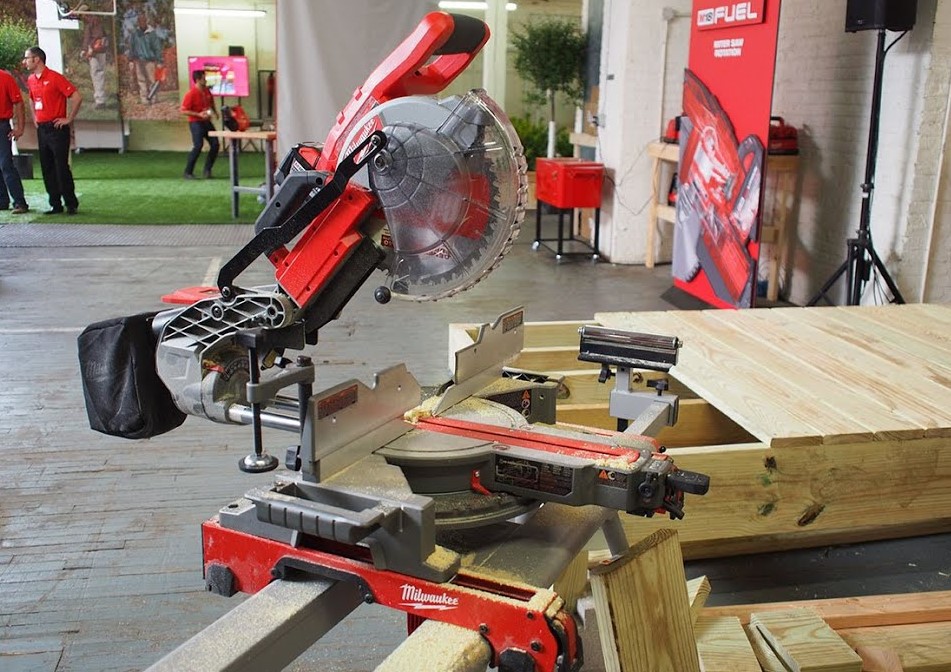
Unlocking your Milwaukee Miter Saw requires proper preparation, adherence to safety measures, and following specific steps. In this section, we will provide you with a step-by-step guide to unlocking your miter saw, along with tips for troubleshooting common issues that may arise during the unlocking process.
Preparation and Safety Measures before Unlocking:
- Read the Manual: Familiarize yourself with the user manual provided by Milwaukee for your specific miter saw model. It contains important safety information and specific instructions for unlocking the saw.
- Wear Personal Protective Equipment (PPE): Put on safety goggles, ear protection, and a dust mask to protect yourself from potential hazards, such as flying debris and loud noise.
- Clear the Workspace: Ensure the work area is clean, organized, and free from any obstructions. This allows for safe and unobstructed movement when unlocking and operating the miter saw.
- Secure the Workpiece: If applicable, securely clamp or hold down the workpiece to prevent movement during the unlocking process, ensuring accurate and safe cuts.
Detailed Instructions for Unlocking the Saw:
- Verify the Power Source: If using a corded miter saw, ensure it is plugged into a grounded power outlet. For cordless models, check that the battery is fully charged and properly inserted.
- Inspect the Blade Guard: Confirm that the blade guard is in place and functioning correctly. The guard should retract smoothly when the saw is lowered and cover the blade completely when in the raised position.
- Adjust the Bevel Angle: Determine the desired bevel angle for your cut and locate the bevel angle adjustment knob or lever on the miter saw. Release the bevel lock, adjust the angle, and lock it in place securely.
- Set the Miter Angle: Identify the miter angle adjustment knob or lever on the saw. Loosen the miter lock, adjust the angle to your desired position, and tighten the lock to secure it.
- Unlock the Saw Head: Look for the saw head lock or release lever. Activate the release lever or unlock mechanism to disengage the saw head from its locked position. This allows the saw head to move freely for making various cuts.
- Make Necessary Adjustments: Once the saw head is unlocked, you can fine-tune the bevel and miter angles as needed to achieve your desired cutting configuration.
Tips for Troubleshooting Common Issues:
- Stuck Lock Mechanism: If the lock mechanism feels stiff or difficult to unlock, apply a few drops of lubricating oil to the moving parts and work the mechanism back and forth to loosen it.
- Incorrect Angle Display: If the angle display on your miter saw is not accurate, consult the user manual for instructions on recalibration or contact Milwaukee’s customer support for assistance.
- Blade Alignment Issues: If the blade is not aligned properly with the miter scale or bevel scale, consult the user manual for instructions on adjusting the blade alignment or seek professional assistance if needed.
Remember, always prioritize safety while unlocking and operating your Milwaukee Miter Saw. If you encounter any persistent issues or uncertainties during the unlocking process, consult the user manual, reach out to Milwaukee’s customer support, or seek guidance from an experienced woodworking professional.
By following the step-by-step guide, taking necessary safety precautions, and troubleshooting common issues effectively, you can unlock your Milwaukee Miter Saw confidently and embark on your woodworking projects with precision and ease.
Best Practices for Unlocking and Operating a Milwaukee Miter Saw
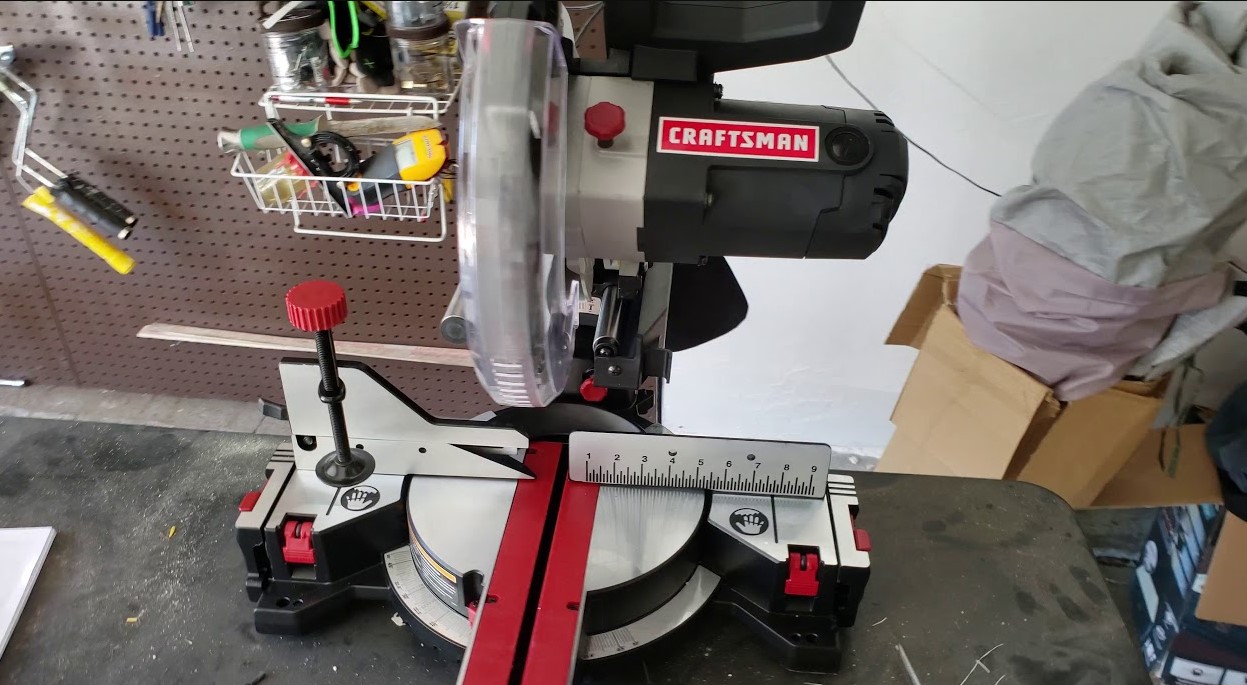
Unlocking and operating a Milwaukee Miter Saw require adherence to best practices to ensure safety, accuracy, and optimal performance. In this section, we will discuss the following best practices:
Proper Body Positioning and Alignment:
- Stand in a stable and balanced position, keeping your feet shoulder-width apart.
- Position yourself to the side of the saw, slightly away from the line of the blade.
- Maintain a firm grip on the handle, using both hands, and keep your arms extended comfortably.
- Align your body and vision with the cutting line to ensure accuracy.
Understanding the Cutting Capacity of the Saw:
- Before making any cuts, familiarize yourself with the cutting capacity of your specific Milwaukee Miter Saw model.
- Be aware of the maximum width, depth, and thickness of material the saw can handle to prevent overloading the tool.
- Avoid forcing the saw through materials that exceed its cutting capacity, as this can lead to kickbacks and other safety hazards.
Maintaining a Stable Workpiece and Using Clamps if Needed:
- Ensure the workpiece is securely positioned against the fence and properly supported to prevent movement during cutting.
- If necessary, use clamps or other suitable methods to secure the workpiece firmly in place.
- This stability helps maintain accuracy and reduces the risk of the workpiece binding or shifting during the cutting process.
Safety Reminders throughout the Cutting Process:
- Always wear appropriate personal protective equipment (PPE), including safety goggles, ear protection, and a dust mask.
- Keep your hands and fingers clear of the blade path and avoid reaching across the blade while it is spinning.
- Wait for the blade to come to a complete stop before removing cut pieces or making any adjustments.
- Avoid distractions and maintain focus on the task at hand to minimize the risk of accidents.
By following these best practices, you ensure your safety and promote efficient and accurate cuts when unlocking and operating your Milwaukee Miter Saw. Remember to prioritize safety throughout the entire cutting process and adhere to the manufacturer’s guidelines and recommendations provided in the user manual.
It’s important to note that while these best practices provide general guidance, always refer to the specific instructions and safety recommendations outlined in the user manual provided with your Milwaukee Miter Saw model. Each model may have slight variations and additional safety considerations, so consulting the manual is essential to ensure safe and proper usage of the tool.
Advanced Techniques and Tips for Unlocking Milwaukee Miter Saws
Unlocking a Milwaukee Miter Saw opens up opportunities to utilize advanced techniques and maximize the saw’s capabilities. In this section, we will discuss some advanced techniques and tips for unlocking and using your miter saw effectively.
Optimizing Bevel and Miter Angles for Precise Cuts:
- Experiment with different bevel and miter angle combinations to achieve specific cuts. Fine-tune the angles to match the requirements of your project for accurate and seamless joints.
- Utilize the digital displays or angle indicators, if available on your model, to set and replicate precise angles consistently.
- Consider using an angle finder tool or digital protractor to measure and verify the accuracy of your bevel and miter angles.
Using the Saw for Complex Angled Cuts:
- For complex angled cuts, such as compound miter cuts, take your time to plan and mark the cut lines on the workpiece accurately.
- Make test cuts on scrap material to verify the angles and ensure a precise fit before making cuts on your actual workpiece.
- Utilize the sliding mechanism, if applicable to your model, to increase the cutting capacity for wider workpieces and achieve angled cuts effectively.
Exploring Additional Features and Accessories for Enhanced Performance:
- Check if your Milwaukee Miter Saw model offers laser guides or shadow cut line indicators. These features help improve cutting accuracy by providing a visual reference for the blade’s path.
- Explore the availability of compatible accessories, such as workpiece clamps, extension tables, or dust collection systems, to enhance the performance and convenience of your miter saw.
- Experiment with different blades suitable for specific materials and cuts, such as fine-tooth blades for smoother cuts on hardwood or specialized blades for cutting through metals or plastics.
Fine-tuning Blade and Saw Performance:
- Regularly inspect and replace the blade if it shows signs of wear or damage. A sharp and properly maintained blade ensures cleaner and safer cuts.
- Keep the saw’s components clean and free from debris to maintain smooth operation and prevent any potential hindrances to unlocking and cutting.
- Periodically check and adjust the calibration of your miter saw, following the instructions provided in the user manual, to maintain accuracy and optimize performance.
By exploring these advanced techniques and tips, you can unlock the full potential of your Milwaukee Miter Saw and achieve precise cuts for complex woodworking projects. Remember to refer to the user manual for your specific model to understand any model-specific recommendations or guidelines for utilizing advanced features and accessories.
Continue to practice and refine your techniques, and don’t hesitate to seek guidance from experienced woodworkers or online communities for additional insights and tips on unlocking and utilizing your Milwaukee Miter Saw to its fullest potential.
Maintaining and Caring for Your Milwaukee Miter Saw
Proper maintenance and care of your Milwaukee Miter Saw are essential for its longevity, optimal performance, and safe operation. In this section, we will discuss important practices for maintaining and caring for your miter saw.
Regular Cleaning and Lubrication for Smooth Operation:
- After each use, clean the saw to remove sawdust, debris, and other contaminants. Use a brush or compressed air to clean the blade guard, fence, and other components.
- Pay special attention to the blade area, ensuring it is free from buildup that could affect cutting performance. Use a blade cleaning solution or a mild detergent to clean the blade as needed.
- Lubricate the moving parts of the saw, such as the pivot points and sliding mechanism, according to the manufacturer’s recommendations. Use a lubricant specifically designed for power tools to ensure smooth operation.
Checking and Adjusting the Saw’s Calibration:
- Regularly inspect and check the calibration of your Milwaukee Miter Saw to ensure accurate cuts. Refer to the user manual for specific instructions on checking and adjusting the calibration.
- Verify the squareness of the blade to the fence and the miter scale using a square or a dedicated calibration tool. Make necessary adjustments as per the manufacturer’s guidelines.
- Periodically check the bevel scale and miter scale accuracy by comparing the saw’s angles with the measurements of a reliable angle measuring tool.
Blade Maintenance and Replacement:
- Inspect the blade before each use to ensure it is in good condition. Look for signs of dullness, chipped teeth, or warping. Replace the blade if it shows any signs of damage or wear.
- Follow the manufacturer’s instructions for removing and replacing the blade. Ensure the blade is properly tightened and secured before using the saw.
- When replacing the blade, choose a blade appropriate for the intended material and cutting application to achieve the best results.
Storing the Miter Saw Properly to Prolong its Lifespan:
- Store the miter saw in a clean, dry, and secure location to protect it from dust, moisture, and potential damage.
- If possible, store the saw in its original case or use a dedicated storage solution to provide extra protection.
- Consider using blade guards or blade covers to prevent accidental contact with the blade when the saw is not in use.
- Before storing the saw, ensure it is unplugged (if corded) or remove the battery (if cordless) for safety.
By following these maintenance practices, you can keep your Milwaukee Miter Saw in optimal condition, extend its lifespan, and ensure accurate and safe operation. Regular cleaning, lubrication, calibration checks, and blade maintenance are key to maximizing the saw’s performance and maintaining its precision.
Refer to the user manual provided with your specific Milwaukee Miter Saw model for detailed maintenance instructions and any model-specific recommendations. By implementing a regular maintenance routine, you can enjoy years of reliable service from your miter saw.
Unlocking Milwaukee Miter Saw: Safety Considerations
Unlocking a Milwaukee Miter Saw requires strict adherence to safety precautions to ensure a safe working environment and minimize the risk of accidents or injuries. In this section, we will discuss the importance of wearing appropriate safety gear, provide an overview of safety features commonly found in Milwaukee Miter Saws, and outline safe practices to follow during unlocking and operation.
Importance of Wearing Appropriate Safety Gear:
- Always wear safety goggles to protect your eyes from flying debris, dust, and potential hazards associated with cutting materials.
- Use ear protection, such as earplugs or earmuffs, to guard against the noise generated by the saw during operation.
- A dust mask or respirator should be worn to prevent inhalation of fine particles and dust generated while cutting.
Overview of Safety Features in Milwaukee Miter Saws:
- Blade Guard: Milwaukee Miter Saws are equipped with a blade guard that encloses the blade when it is not in use. Ensure that the blade guard is functioning properly and always in place before operating the saw.
- Electric Brake: Some models of Milwaukee Miter Saws feature an electric brake that rapidly stops the blade’s rotation when the trigger is released. This feature enhances safety and reduces the risk of accidental contact with the moving blade.
- Safety Trigger: Milwaukee Miter Saws often come with a safety trigger mechanism that requires deliberate and intentional pressure to engage the saw, reducing the likelihood of accidental starts.
- Spindle Lock: The spindle lock feature secures the blade in place, making it easier to change blades. Always engage the spindle lock and follow proper blade replacement procedures to minimize the risk of injuries.
Safe Practices to Avoid Accidents or Injuries during Unlocking and Operation:
- Read and understand the user manual provided by Milwaukee for your specific miter saw model. Familiarize yourself with the safety guidelines, instructions, and recommended operating procedures.
- Ensure the miter saw is placed on a stable and level surface before unlocking or operating. This prevents the saw from tipping over during use.
- Keep your hands and fingers away from the blade at all times, both during unlocking and cutting. Avoid reaching across the blade while it is spinning.
- Wait for the blade to come to a complete stop before making any adjustments, changing the blade, or removing cut pieces from the work area.
- Maintain a clean and uncluttered workspace to prevent accidents and allow for safe movement while operating the saw.
- Disconnect the power cord (if corded) or remove the battery (if cordless) before performing any maintenance, blade changes, or adjustments.
- Do not force the saw through the material. Let the blade do the cutting, applying gentle and controlled pressure to achieve accurate and safe cuts.
- Keep bystanders and pets at a safe distance from the saw during operation to prevent accidents or distractions.
By prioritizing safety, wearing appropriate safety gear, understanding and utilizing the safety features of your Milwaukee Miter Saw, and following safe practices, you can mitigate the risk of accidents or injuries while unlocking and operating the saw. Remember to exercise caution, maintain focus, and work in a controlled manner to ensure a safe and productive woodworking experience.
Conclusion
In this article, we have explored the importance of unlocking a Milwaukee Miter Saw and provided a comprehensive guide to help you unlock and utilize your miter saw effectively. Let’s recap the main points discussed and offer some final tips and recommendations.
We began by understanding the basics of a Milwaukee Miter Saw, including its components and safety precautions. We then discussed why unlocking the saw is necessary, highlighting the importance of unlocking for various tasks, providing examples of situations where unlocking is required, and discussing the benefits it brings.
Next, we explored different models of Milwaukee Miter Saws, offering an overview of the available range, highlighting their similarities and differences, and briefly comparing their features and capabilities.
We provided a step-by-step guide to unlocking your Milwaukee Miter Saw, emphasizing the importance of preparation, safety measures, and detailed instructions for unlocking the saw. Additionally, we shared tips for troubleshooting common issues that may arise during the unlocking process.
To enhance your unlocking and operating experience, we discussed best practices such as proper body positioning, understanding the cutting capacity of the saw, maintaining a stable workpiece, and following safety reminders throughout the cutting process.
We delved into advanced techniques and tips for unlocking Milwaukee Miter Saws, including optimizing bevel and miter angles, using the saw for complex angled cuts, and exploring additional features and accessories for enhanced performance.
We emphasized the significance of maintaining and caring for your Milwaukee Miter Saw, covering regular cleaning and lubrication, checking and adjusting calibration, blade maintenance and replacement, and proper storage practices.
Lastly, we highlighted safety considerations, emphasizing the importance of wearing appropriate safety gear, providing an overview of safety features in Milwaukee Miter Saws, and outlining safe practices to follow during unlocking and operation.
In conclusion, unlocking your Milwaukee Miter Saw opens up a world of possibilities for your woodworking projects. By following the guidelines and recommendations outlined in this article, you can unlock your miter saw confidently, ensuring safety, accuracy, and optimal performance.
Remember to always prioritize safety, wear appropriate safety gear, and refer to the user manual specific to your Milwaukee Miter Saw model for detailed instructions and recommendations. Regular maintenance, including cleaning, lubrication, calibration checks, and blade maintenance, will prolong the lifespan of your miter saw and ensure its reliable performance.
Now, it’s time to unlock the full potential of your Milwaukee Miter Saw and embark on your woodworking journey with confidence. Happy unlocking and happy woodworking!